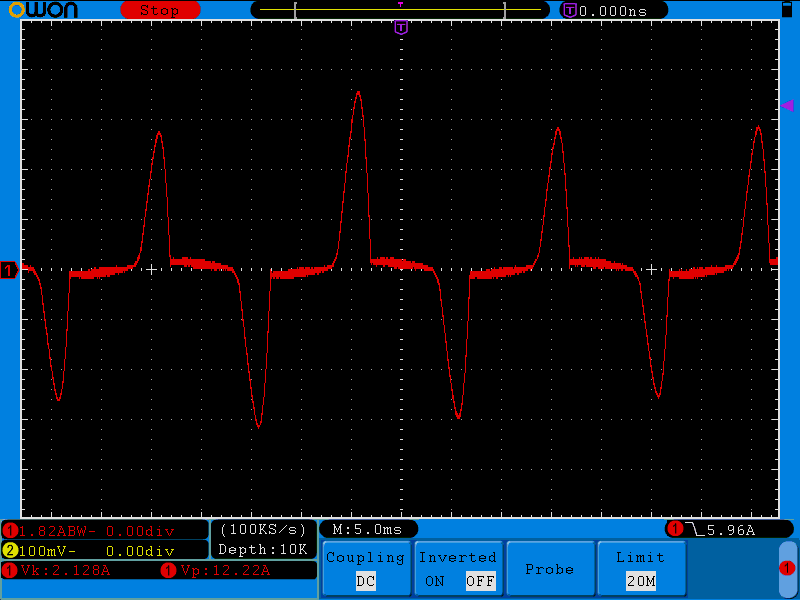Welcome, Joe, to the OEM forum.
I’d agree with this - up to a point. You say you want to use emonLib? This takes discrete samples every 10 s (normally, but you can choose the interval) and each sample lasts (from memory) 200 ms. What this means is it might miss rapid changes in your use - like for example an induction hob switching on and off every few seconds. There’s also emonLibCM, the ‘CM’ stands for Continuous Monitoring’ and it does - it misses nothing, just like your supplier’s meter! With steady loads long-term, there’s little to choose between the two. If you have something that controls the power and switches rapidly, then I’d recommend emonLibCM.
No, you have one phase and it’s split and earthed (to me, grounded to you) in the middle. So the ‘A’ leg goes 120 V positive to earth on one half-cycle while the ‘B’ leg goes 120 V negative, so you have 240 V between them with the ‘A’ leg 240 V positive with respect to the ‘B’; then on the next half-cycle everything is reversed and the ‘A’ leg is 120 V negative and the ‘B’ is 120 V positive, and the ‘A’ leg is 240 V negative to the ‘B’.
Yes, this is all you need to do. The currents and powers from emonLib (either version) are averages over the reporting interval, so it’s fine to add them. If you try to add the currents in the hardware by wiring the two c.t’s in parallel, then you do need to get the relative phase relationship correct, otherwise they subtract rather than add ![]() .
.
I can’t comment on the actual performance of the ADS1115, but at 860 sps with your faster 60 Hz supply, you have 7 samples per cycle - in theory you’d just about measure a 3rd harmonic component of the mains. If you have a nasty current wave like this, from a washing machine with a brushless d.c. motor on spin (from Phase measurement and correction in IoTaWatt - #17 by dBC) then expect no guarantee of accuracy whatsoever:
That’s meaningless without knowing the maximum power you can measure. The input circuitry in the first part of CT Sensors - Interfacing with an Arduino — OpenEnergyMonitor 0.0.1 documentation and Measuring AC Voltage with an AC to AC power adapter — OpenEnergyMonitor 0.0.1 documentation
leaves a lot to be desired and you are likely to see an improvement in performance if you adopt, for both voltage and current, the configuration used in the emonTx4 and emonPi2 lower down the respective pages.
Also, the physical layout of the components and the source of the 5 V supply can have a significant effect on the electrical noise picked up and measured, which manifests itself as a residual current indicated when there is none.
